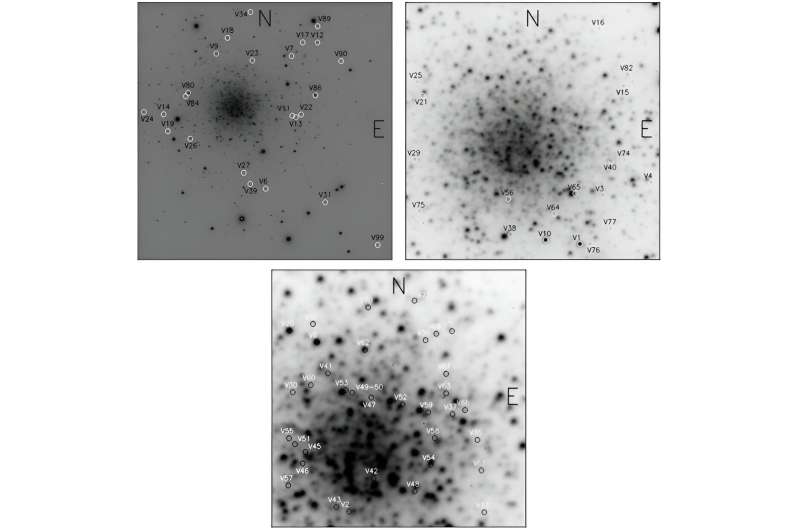
Using the Indian Astronomical Observatory (IAO) and ESA’s Gaia satellite, astronomers have explored a galactic globular cluster known as NGC 2419. Results of the study, published April 29 on the preprint server arXiv, shed more light on the properties of this cluster and its stellar content.
Globular clusters (GCs) are collections of tightly bound stars orbiting galaxies. Astronomers perceive them as natural laboratories enabling studies on the evolution of stars and galaxies. In particular, globular clusters could help researchers to better understand the formation history and evolution of early-type galaxies, as the origin of GCs seems to be closely linked to periods of intense star formation.
Located some 300,000 light years away from Earth, NGC 2419 is one of the most distant globular clusters in the outer halo of our galaxy. With a radius of 260 light years, mass of about 900,000 solar masses and an absolute magnitude of -9.42 mag, it is also one of the most massive and brightest galactic GCs.
Given that the population of variable stars in NGC 2419 is quite rich, a team of astronomers led by Armando Arellano Ferro of the National Autonomous University of Mexico (UNAM), decided to investigate the stellar content of this cluster, focusing mainly on its variables. For this purpose they used IAO’s 2m telescope and data from Gaia’s Data Release 3 (DR3).
Ferro’s team was able to obtain photometry for 1,107 point sources in the field of NGC 2419. The light curves include 74 of the known variable stars in the cluster, and based on these variables, the astronomers produced a color magnitude diagram (CMD).
According to the study, the radial distribution of members of NGC 2419 indicates the extended reach of the cluster to distances of about 456 light years. This finding makes NGC 2419 one of the largest clusters in the Milky Way.
Based on the light curves of RR Lyrae variable stars in NGC 2419, the authors of the paper estimated the mean metallicity and distance to the cluster. It was found that NGC 2419 has a metallicity of approximately -1.89 and is located about 270,000–281,000 light years away.
The study also found that one of variables in NGC 2419 of the W Virginis type, designated V18, has evolved from a zero-age-horizontal-branch (ZAHB) blue tail progenitor (with a total mass of about 0.54 solar masses) with a very thin shell (with a mass of only 0.04 solar masses). This could have implications for our understanding of the evolution of Population II Cepheids—old, typically metal-poor, low-mass variables pulsating with periods typically between 1 and 50 days. W Virginis variables are a subclass of Population II Cepheids.
More information:
Arellano Ferro et al, Long term CCD photometry of the distant cluster NGC 2419: the CMD revisited, arXiv (2024). DOI: 10.48550/arxiv.2404.19151
Journal information:
arXiv
© 2024 Science X Network
Astronomers explore globular cluster NGC 2419 (2024, May 8)
retrieved 8 May 2024
from https://phys.org/news/2024-05-astronomers-explore-globular-cluster-ngc.html
part may be reproduced without the written permission. The content is provided for information purposes only.